
Regular checking accounts are a type of bank account that allows you to write checks, use a debit card, and access your money online or through an ATM.
These accounts typically come with a debit card, which you can use to make purchases or withdraw cash from an ATM. You can also write checks to pay bills or make purchases.
One of the benefits of a regular checking account is that it's usually free or low-cost, with some banks offering no monthly maintenance fees or low fees for overdrafts.
You can also earn interest on your account balance, although the interest rates may be low.
Additional reading: How Do I Order Personal Checks
How Checks Work
A checking account is a great way to manage your finances, but have you ever wondered how checks work? A check is a financial instrument you can use to transfer money from your bank account to another person or entity.
You can write a check to pay bills or make purchases, and the person or business you write a check to deposits it into their checking account. Their bank processes the check and the money is withdrawn from your account and credited to theirs.
Discover more: If Someone Deposits Money into a Checking Account the Banks
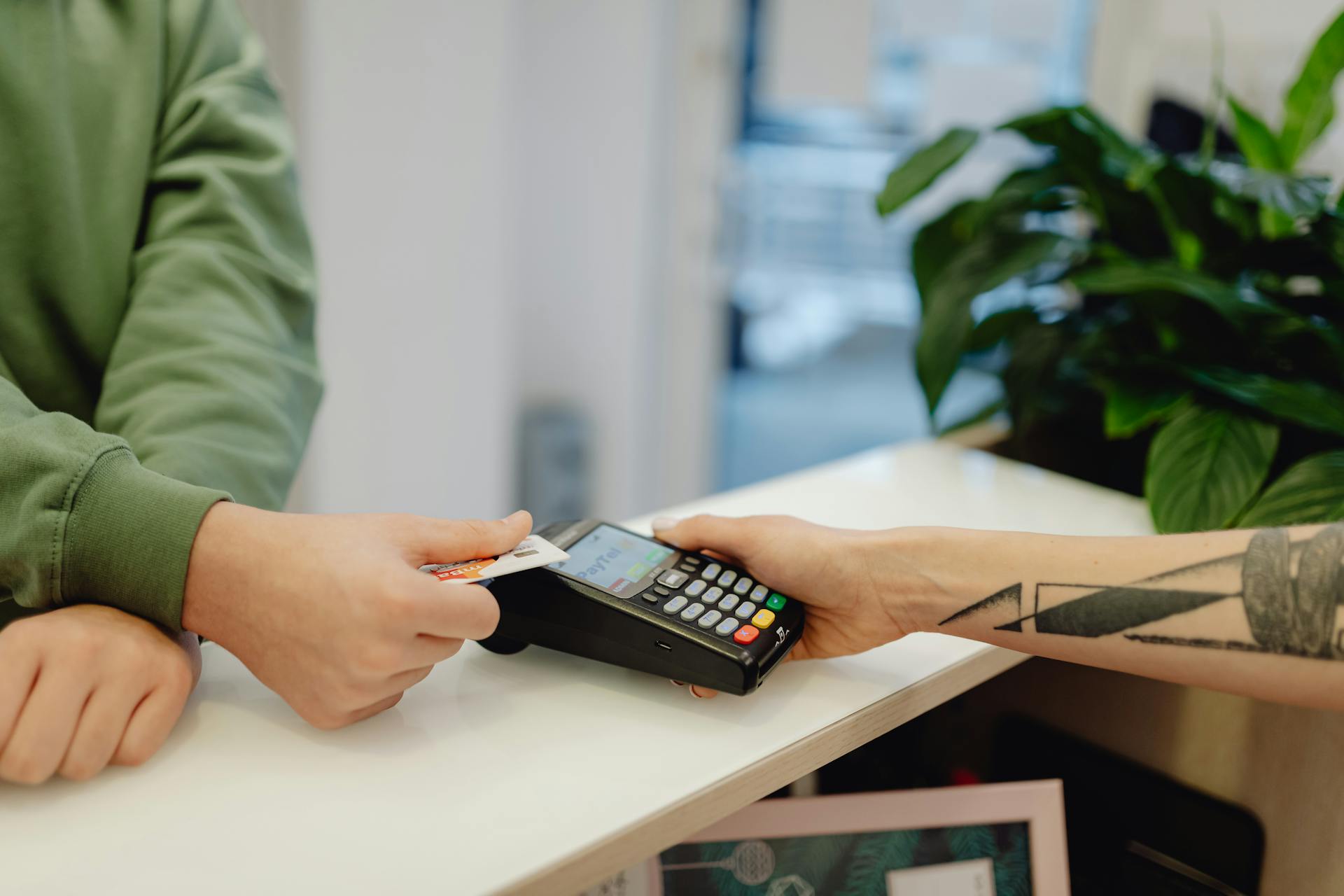
There are three ways a check can be processed: the conventional method, the Electronic Fund Transfer (EFT) process, and the Check 21 Act. The conventional method involves shipping the original paper check from bank to bank, which can take a few days.
The Check 21 Act makes it easier for banks to create and send electronic images of paper checks, known as substitute checks. This can speed up the process. Under the EFT process, a merchant or other party can change your paper check into an electronic debit that is paid from your account.
You can also deposit checks into your checking account using mobile check deposit. This feature allows you to take a photo of a paper check and deposit it to your account.
A unique perspective: Checks for Personal Checking
Choosing a Bank
Choosing a Bank is a crucial step in setting up a regular checking account. You'll want to research the bank's reputation for customer service and financial stability.

Consider factors like fees, requirements, account access, ATM access, interest, and insurance. For example, make sure your deposits are FDIC- or NCUA-insured. This will give you peace of mind knowing your money is secure.
When comparing banks, think about what matters most to you: convenience or cost. Brick-and-mortar banks may be a good fit if you need to visit a branch, while online banks may charge fewer fees.
Here are some common fees to watch out for:
- Monthly maintenance fees
- Minimum balance fees
- Account inactivity fees
- Wire transfer fees
- ATM fees and surcharges
- Non-sufficient funds fees
- Overdraft fees
- Overdraft protection fees
Choosing a Bank
You can open a checking account at a brick-and-mortar bank, credit union, or online bank. Brick-and-mortar banks are good for people who need to visit a branch.
To choose a bank, consider the fees associated with a checking account. Monthly maintenance fees, minimum balance fees, account inactivity fees, wire transfer fees, ATM fees and surcharges, non-sufficient funds fees, overdraft fees, and overdraft protection fees are all common fees to look out for.
Recommended read: No Overdraft Fee Checking Account

Research the bank's reputation for customer service and financial stability by checking sources like J.D. Power and FDIC. A bank's reputation can make a big difference in your overall banking experience.
Make sure your deposits are FDIC- or NCUA-insured, which means your money is protected up to $250,000. This is a crucial factor in choosing a bank.
To open a checking account online, you'll typically need to provide personal and financial information, and arrange for your initial deposit. This can usually be done in under 10 minutes.
Here are some key factors to consider when choosing a bank:
- Fees: Review monthly maintenance fees, overdraft fees, and other bank fees.
- Requirements: Find out if you need to make a minimum deposit, maintain a minimum balance, or meet other requirements to open the account.
- Account access: Ensure the bank has branches where you can do in-person business and a user-friendly website and mobile app.
- ATM access: Make sure you can access a broad network of fee-free ATMs or get reimbursed for fees when using an ATM outside its network.
- Interest: Learn the interest rate on money kept in your checking account.
- Reputation: Research the bank's reputation for customer service and financial stability.
- Insurance: Make sure your deposits are FDIC- or NCUA-insured.
Choosing a Bank
To open a checking account, you'll need to choose a bank that fits your needs. Compare account fees, requirements, and other factors before picking a financial institution, whether a traditional bank, credit union, or online-only bank.
Some banks have higher fees than others, so it's essential to research and compare them before making a decision. Consider factors like ATM fees, monthly maintenance fees, and overdraft fees.
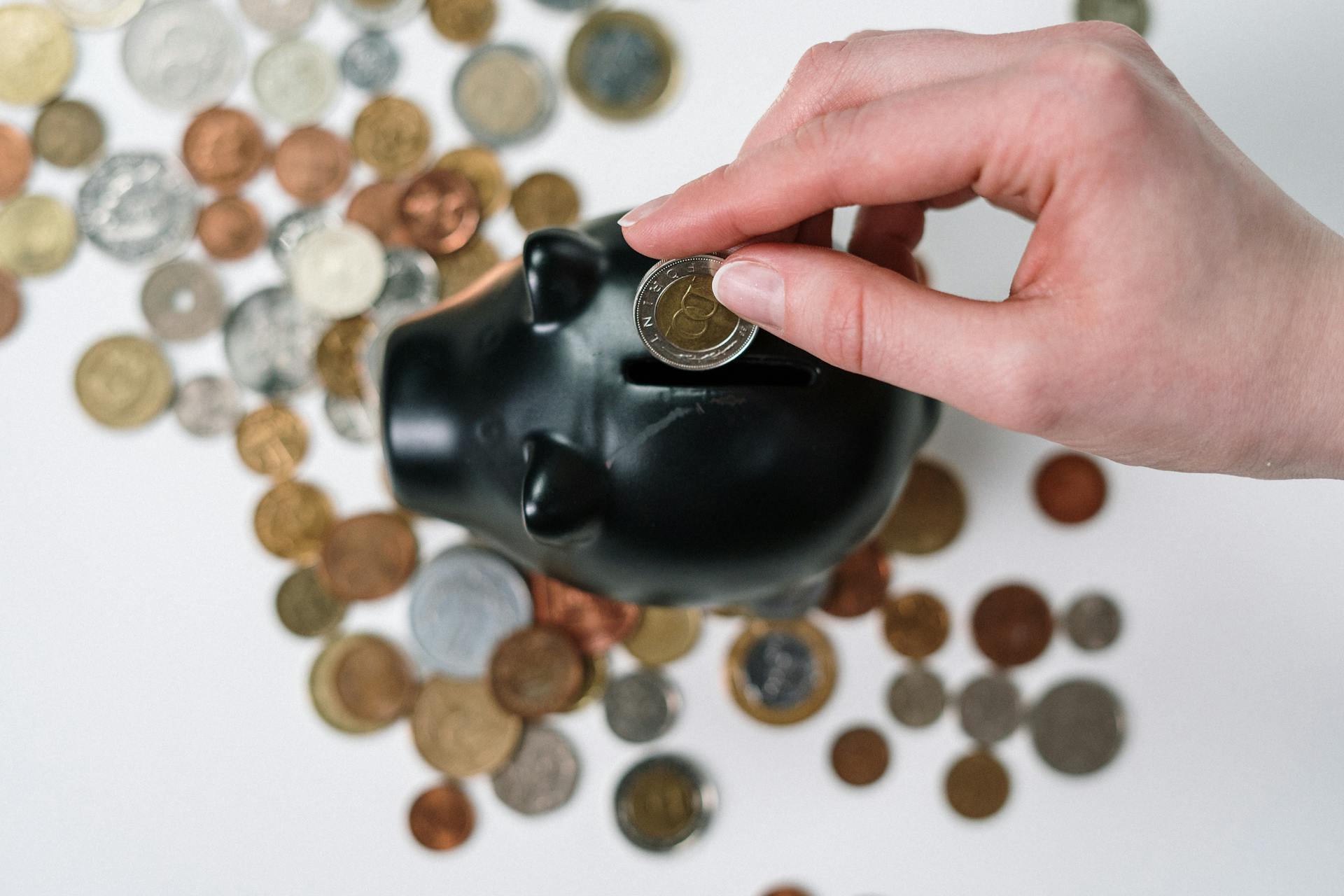
You should also think about the bank's online and mobile banking capabilities. Can you easily access your account and manage your finances online or through a mobile app? Some banks offer more comprehensive online banking features than others.
Here's a quick rundown of the types of banks you might consider:
Ultimately, the best bank for you will depend on your individual needs and preferences. Take the time to research and compare different options before making a decision.
Student
If you're a student, you're in luck - many banks offer special checking accounts designed just for you. These accounts often have no maintenance fees and no minimum balance requirements, making it easier to manage your finances.
High school students typically need a parent's involvement as a co-owner or co-applicant to open a student checking account. This can be a great way to teach your parents about your financial habits and responsibilities.
Student checking accounts are designed for students who are new to using checking, and they usually have a minimum and maximum age range to qualify. For example, teen checking accounts are typically designed for kids aged 13 to 17.
One of the biggest advantages of student and teen checking accounts is that they often have little to no fees.
You might like: How Often Does Ssi Check Your Bank Accounts
Senior

Senior accounts are designed for older banking clients, typically requiring you to be 55 or older to open one. These accounts often come with unique benefits like free premium checks and personalized debit cards.
Some senior checking accounts even waive fees or offer higher interest rates on savings accounts. This can be a great perk for seniors who want to manage their finances efficiently.
Senior accounts can also pay interest or quarterly dividends, providing an added income stream. This can help seniors make the most of their savings.
If you're a senior looking for a bank account, consider the specific benefits offered by each account. This will help you choose the one that best fits your needs.
Take a look at this: Dwp Check Bank Accounts
Types of Accounts
Student checking accounts are designed for students who are new to using checking, typically with a minimum and maximum age range to qualify, such as 17 to 24 years old.
These accounts often have little to no fees, or if they do charge a monthly fee, it's easy to avoid it by maintaining a low minimum balance or setting up a monthly direct deposit.
Banks offer many different types of checking accounts, including student accounts, premium accounts, basic accounts, senior accounts, business accounts, rewards accounts, and interest accounts, to cater to the diversity in their clientele.
For more insights, see: How to Check for Old Bank Accounts
What Is the Difference Between Savings

Savings accounts are liquid, meaning you can access your money when you need it.
A savings account typically earns a low interest rate, around 0.01% to 0.1% APY, which is generally lower than what you'd get with other types of accounts.
The interest rate on a savings account is often fixed, so you know exactly how much you'll earn over a certain period.
Suggestion: Can You Deposit a Check in a Savings Account
Types of Accounts
Checking accounts come in several varieties. There are options to suit different needs and lifestyles.
Student checking accounts are designed for high school students and college students. These accounts often feature low or no maintenance fees and no minimum balance requirements. High school student accounts typically require parent involvement as a co-owner or co-applicant.
Student and teen checking accounts have a minimum and maximum age range to qualify. For example, teen checking accounts are typically designed for kids aged 13 to 17, while student checking accounts may be for students aged 17 to 24.
Some checking accounts offer perks like low fees, no minimum balance requirements, and simple ways to avoid monthly fees. These accounts can be a great option for those who want to avoid unnecessary charges.
If this caught your attention, see: Bofa Student Checking Account
Standard or Traditional

A standard checking account is a basic checking account you can use to pay bills, write checks, and make purchases using a debit card. This type of account typically has minimum balance requirements, meaning you need to maintain a certain balance daily or monthly to avoid paying a maintenance fee.
Some standard checking accounts may require a minimum deposit to open, so be sure to check with your bank beforehand. You'll also want to review the account's fees and requirements to ensure it meets your needs.
You'll have access to unlimited check-writing abilities, debit card access, and online and mobile banking to manage your money. This is the key feature of a standard checking account.
Here are some common features of standard checking accounts:
- Unlimited check-writing abilities
- Debit card access
- Online and mobile banking
To open a standard checking account, you'll typically need to provide the same information as for any other checking account, including your name, mailing address, phone number, date of birth, and Social Security number.
Account Features

You can earn cash back on your debit card purchases with the right checking account. Some accounts, like the Discover Cashback Debit Checking, offer 1% cash back on up to $3,000 in debit card purchases each month.
To take advantage of cash back rewards, consider your average monthly balance. If you plan on keeping a large balance consistently throughout the year, you may want to look for an account with a minimum balance requirement that justifies the perks.
Here are some key account features to consider:
- Minimum Deposit Requirement: Some accounts require a minimum deposit to open or maintain the account.
- Types of Checking Accounts: There are different types of checking accounts available, each with its own set of features and benefits.
- Debit Card: A debit card is not always a checking account, but it can be a part of one.
Interest
Interest-bearing checking accounts give you a small return every month for the balance in your account. Some accounts pay a flat interest rate regardless of your balance, while others pay more on higher balances.
The interest rate will almost certainly be below the inflation rate, but it might be comparable to what some savings accounts pay. You can find a bank that gives you interest along with a place from which you can do your everyday banking.
If this caught your attention, see: Shop Online Pay with Checking Account
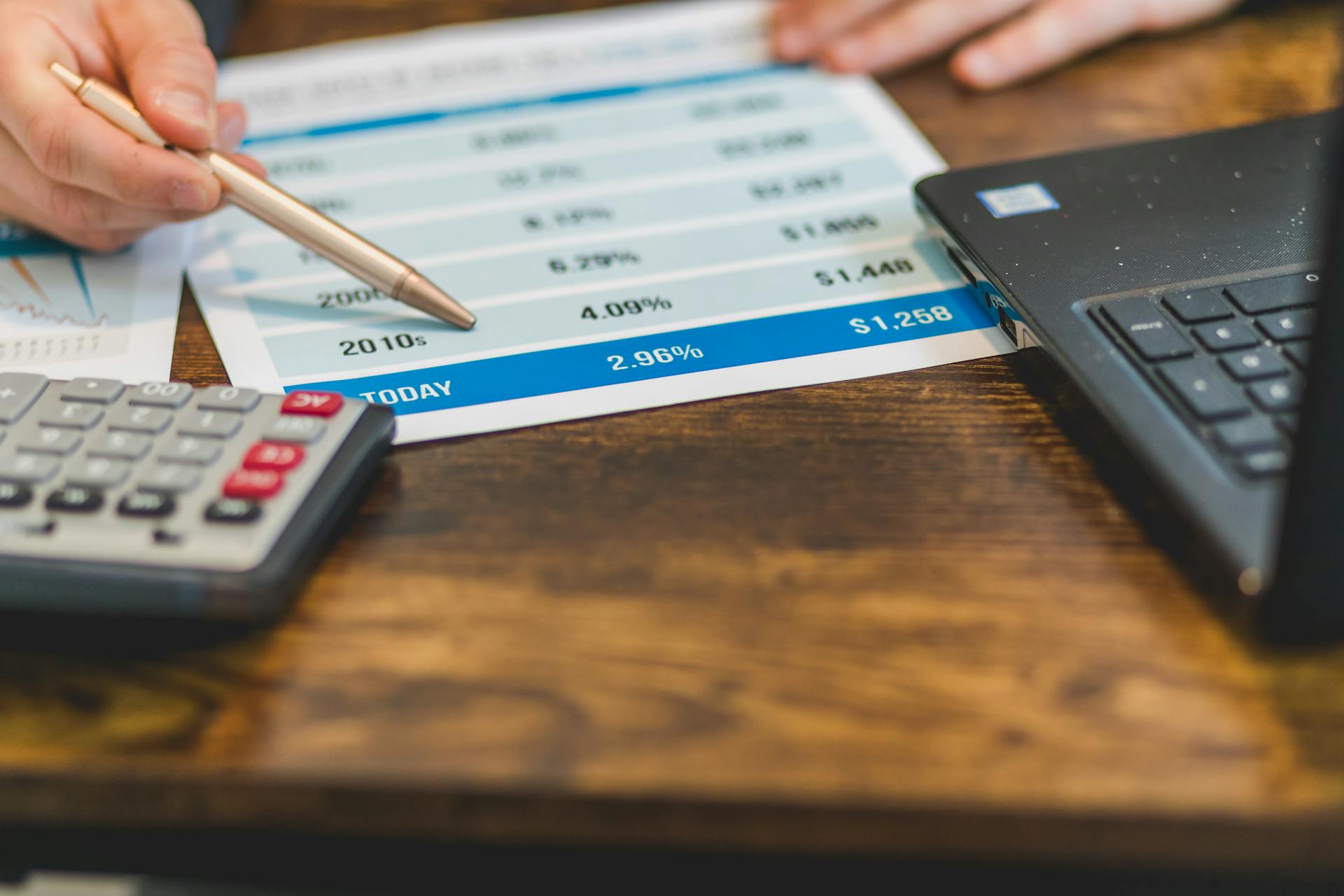
Interest is generally calculated on a daily basis and deposited directly into the checking account at the end of each month. This means you'll earn interest on your balance every day, not just when you make a deposit.
Some checking accounts with higher interest might impose specific requirements to score the higher rate. For example, you must maintain a high balance or make many debit card transactions monthly.
You may not come out ahead with an interest-bearing checking account if its fees are too high. You may be better off with a free checking account, even if it pays less or no interest.
Some free checking accounts do pay interest, but it's not always the case. You'll need to check the terms and conditions of the account to see if interest is included.
Interest-bearing checking accounts are a simple way to grow your money while still having the convenience of being able to write checks and pay bills. Just remember that the interest rate will likely be lower than what you'd get with a high-yield savings account or a certificate of deposit.
You might enjoy: Free Checking Account No Credit Check No Deposit
Direct Deposit
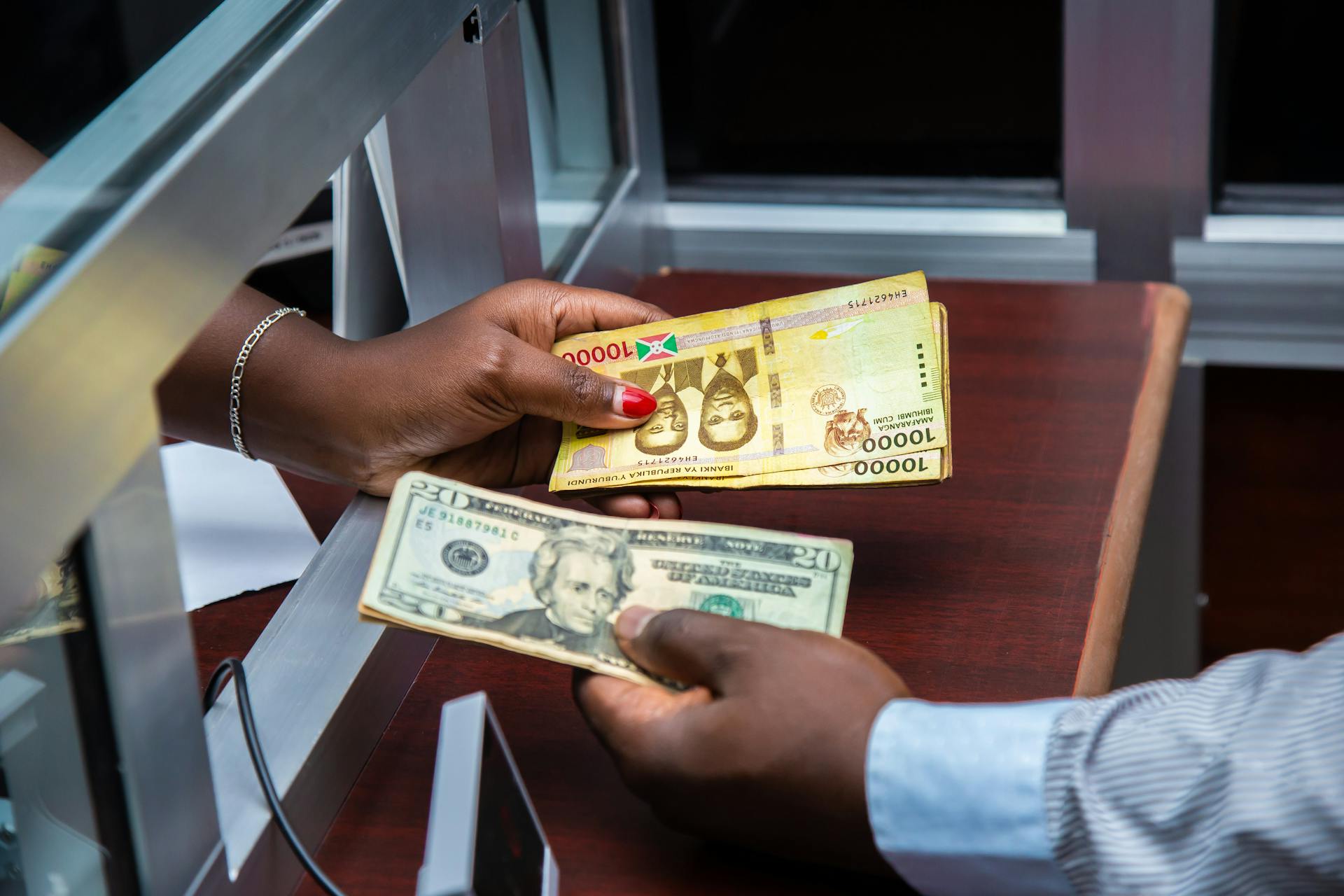
Direct Deposit is a convenient way to receive your pay, as it lets your employer electronically deposit money into your bank account. This gives you quicker access to your money than receiving and depositing a paper check.
Banks also benefit from direct deposits due to the steady inflow of cash. They often provide benefits like free checking if you set up direct deposit for your account.
Debit vs Check Card
A debit card and a check card are essentially the same thing, letting you make transactions using funds in your checking account.
You can make cash withdrawals from ATMs with a debit card, which is a convenient feature of having a checking account.
A debit card can be a feature of a checking account, but it's not a checking account in and of itself.
You can add money to a prepaid debit card that's completely independent of any bank account, making it a separate entity.
Discover more: Free Online Checking Account with Virtual Debit Card
If you have a checking account that comes with a debit card, that card is directly linked to your balance, so be aware of your account's limits and funds.
Your bank might impose daily, weekly or monthly limits on purchases and withdrawals, so keep an eye on those limits to avoid any issues.
Convenience
If you're the kind of person who prefers personal interaction, you'll probably want a checking account at a bank that has a lot of branches. However, if you can do without, you'll fare well with an online bank.
Online banks don't have very many brick-and-mortar locations, but they offer the convenience of online and mobile banking with a debit card. This makes it easy to manage your account from anywhere.
Many online banks allow you to use different banks' automated teller machines (ATMs), which makes cash withdrawals easier and cheaper. This is a big perk if you travel or need to access cash on the go.
Discover Cashback Debit
Discover Cashback Debit is a great option for those who want to earn rewards on their debit card purchases. It's available for those 18 and older.
You can earn 1% cash back on up to $3,000 in debit card purchases each month, which is a nice perk. This can add up to $30 in cash back rewards per month, assuming you reach the $3,000 spending limit.
To take advantage of this offer, you'll need to meet the minimum deposit requirement for a checking account. The specific details can be found on the Discover website.
A checking account is a type of account that allows you to deposit and withdraw money as needed. It's a fundamental part of managing your finances, and having multiple checking accounts is possible, but you should be aware of the reasons why you might be denied one.
Discover more: Joint Account Discover
Account Management
Managing your regular checking account is a breeze with the right tools. You can easily access your account online or through the bank's mobile app.
To make changes to your account, you can simply log in to your online account or mobile app and update your information. This includes updating your address, phone number, or email address.
You can also set up account alerts to notify you of low balances, large transactions, or other important account activity. This will help you stay on top of your finances and avoid any potential issues.
Being Denied
You can be denied a checking account if you've racked up a history of writing bad checks, which can stay on your report for up to five years.
Banks and credit unions review your credit report and checking account report before approving a new account application.
Repeatedly bouncing checks or failing to pay overdraft fees can result in a financial institution turning down your application.
Having an account "closed for cause" can also lead to a denied application.
If a bank has closed your checking account or you can't qualify for a new one, you might turn to second-chance checking accounts.
Readers also liked: How to Get Personal Checks
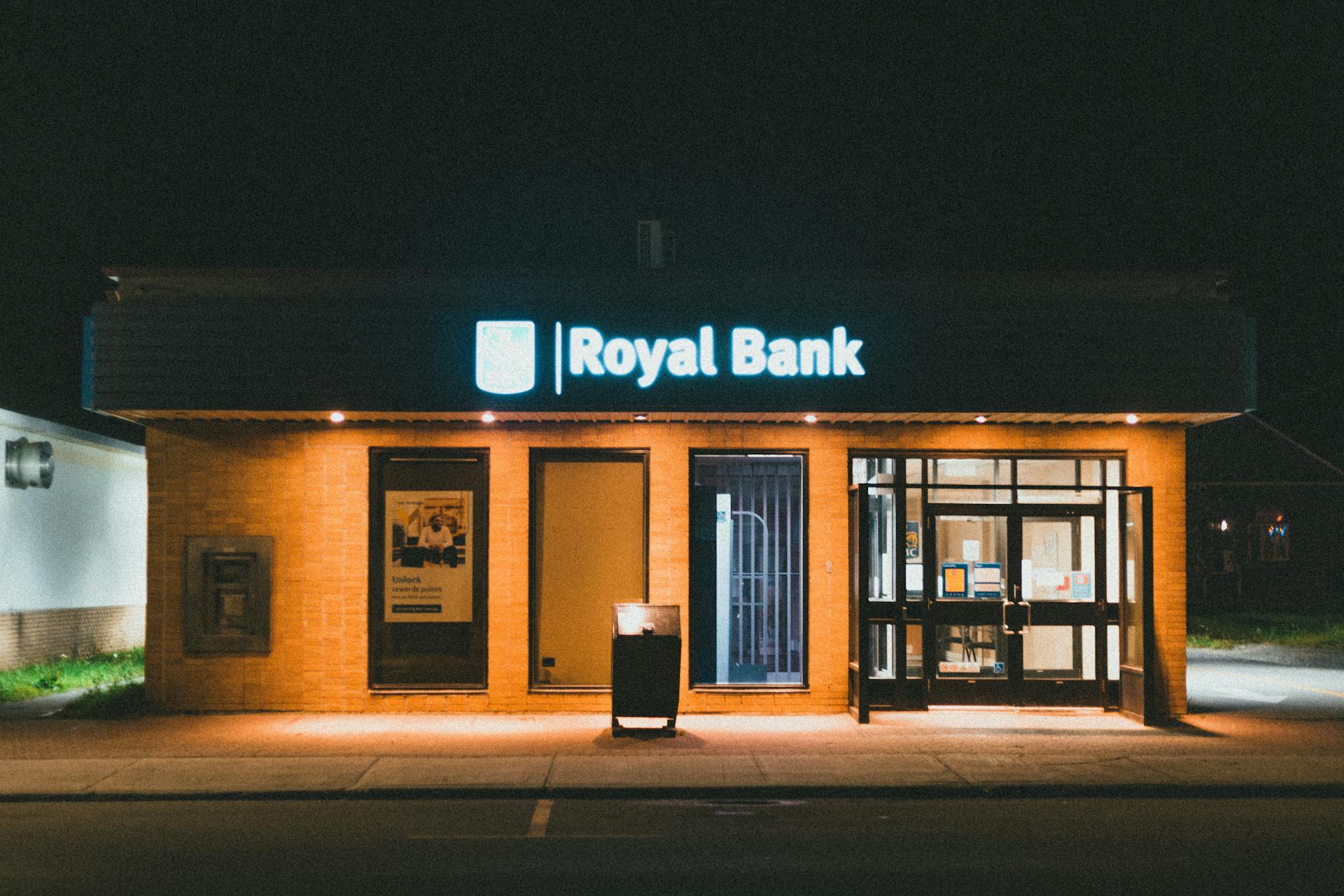
You have the right to request a free checking account report once a year from each of the nationwide agencies, including Certegy, ChexSystems, Early Warning Services, and Telecheck.
If you notice any inaccurate information, you can dispute it.
You can request a copy of the report that banks use to evaluate your application.
Here's a list of the nationwide agencies that provide free checking account reports:
- Certegy
- ChexSystems
- Early Warning Services
- Telecheck
Return
If you're not earning interest on your money, consider opening a savings account to complement your checking account.
Regular checking accounts usually pay little or no interest on your balance.
If you're looking for a little income, you may consider opening up a companion savings account to your checking account.
With a savings account, you're depositing money that you don't necessarily plan to spend, or at least not in the near-term.
You might open a savings account for emergencies or to hold money for a future vacation.
A different take: Does Opening a New Bank Account Affect Your Credit Score
Finding My Phone Number
Finding your phone number can be a challenge, but it's often listed in a similar way to your checking account number - at the bottom, after the phone number prefix. You can also log in to online or mobile banking to view your phone number, or contact the bank and verify your identity to get the number.
If you're having trouble finding your phone number, try checking your bank's online or mobile banking platform, just like you would with your checking account number. Many banks list phone numbers in the same section as account numbers.
To make it easier, here are some common places to find your phone number:
- Check your bank's online or mobile banking platform
- Contact the bank and verify your identity
Remember, your phone number is an essential piece of information, so take the time to find it and keep it safe.
Account Security
Regular checking accounts offer a range of security measures to protect your money.
You can set up account alerts to notify you of large transactions or suspicious activity.
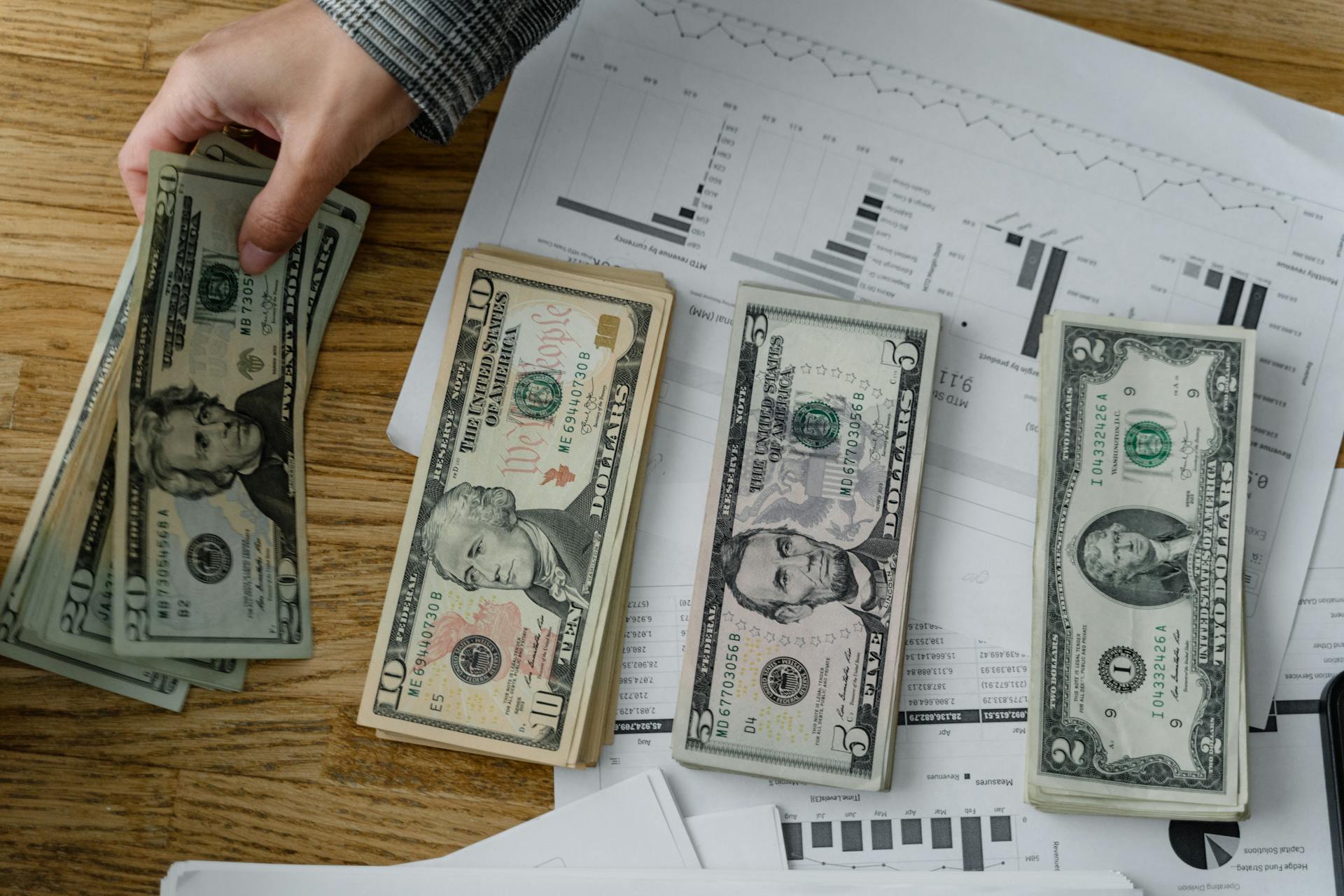
Most banks offer two-factor authentication, which requires both a password and a verification code sent to your phone or email.
Online banking is often more secure than using an ATM or bank branch, since it's harder for scammers to intercept your information.
Transaction limits can be set up to prevent unauthorized transactions from exceeding a certain amount.
Some banks also offer zero-liability policies, which mean you won't be held responsible for unauthorized transactions.
Frequently Asked Questions
What is the definition of a regular checking account?
A regular checking account is a basic bank account that allows you to deposit, withdraw, and manage your money through various methods, including ATMs, checks, and debit cards. It's a straightforward way to handle everyday banking needs.
What's the difference between access checking and regular checking?
Difference between Access Checking and Regular Checking: Access Checking doesn't allow check writing, while Regular Checking does. Choose the one that fits your banking needs
What's the difference between a regular checking account and a now account?
A NOW account earns interest on deposited funds, whereas a regular checking account typically does not. The main difference is that NOW accounts often require a 7-day notice for withdrawals, but this is rarely enforced.
Sources
- https://www.occ.gov/topics/consumers-and-communities/consumer-protection/depository-services/checking-accounts.html
- https://www.investopedia.com/terms/c/checkingaccount.asp
- https://www.investopedia.com/personal-finance/6-different-types-checking-accounts/
- https://www.forbes.com/advisor/banking/checking/
- https://www.firstunitedbank.com/checking-accounts
Featured Images: pexels.com


